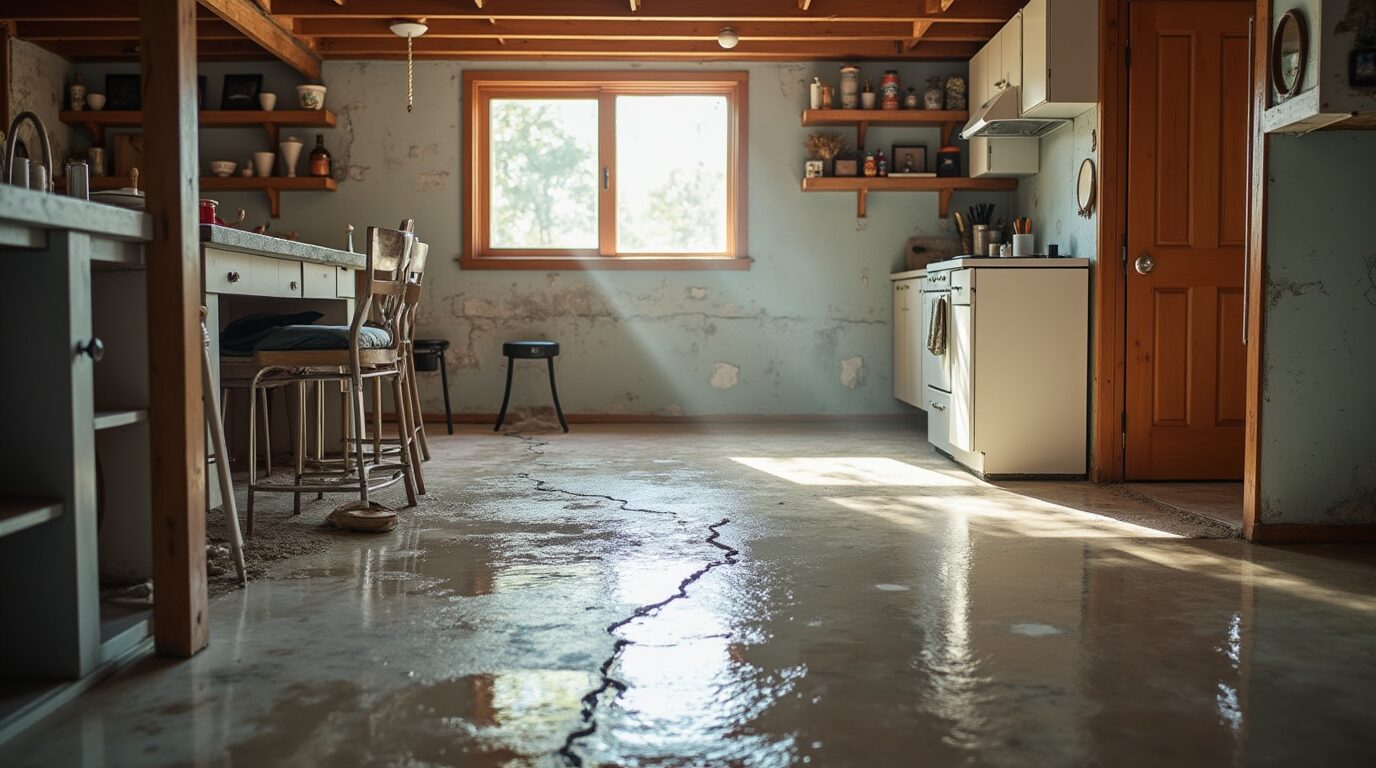Why Sump Pumps Fail And Lead To Flooded Basements
By: 911 Water Damage Experts
Across Canada, basement floods make up one of the fastest-growing home insurance claims, and failed sump pumps sit at the centre of many loss reports.
When a unit quits, groundwater quickly rises, saturating walls, flooring, and treasured belongings. The average flooded-basement claim in Ontario now tops $43 000, yet routine maintenance could prevent most incidents.
Let’s get right into it!
Common Failure Causes
Power Outages And Lack Of Battery Backup
Thunderstorms that trigger heavy rainfall often knock out hydro service at the same time. A pump without an independent power source stops just as water starts pouring into the pit. Installing a deep-cycle battery backup keeps the system running for eight to forty-eight hours, buying time until electricity returns.
Switch Malfunctions Due To Debris
The float switch signals the motor to start and stop. Silt, loose insulation, and pet hair can jam the float arm or clog the diaphragm, leaving the motor silent while water rises. Cleaning the pit every three months removes obstructions and restores dependable activation.
Frozen Or Clogged Discharge Lines
During a January cold snap, the discharge pipe can freeze solid if it lacks insulation or a proper air gap. Ice creates a hard plug, forcing water to backflow into the basement. A simple sleeve of closed-cell foam combined with a downward-angled line prevents ice blockage and keeps drainage steady.
Undersized Pumps For Large Catchment Areas
Many new builds come with one-third horsepower models suitable for minor seepage. However, homes with large weeping-tile networks demand at least one-half horsepower. Oversizing does not waste energy—the motor runs less frequently, reducing wear and extending lifespan by as much as four years.
Warning Signs And Diagnostics
Unusual Noises And Vibration
Grinding or rattling indicates worn bearings or a bent impeller. If you hear metallic squeals, shut off the unit and schedule service. Running a damaged impeller can drop flow rate by fifty per cent and burn out the motor coil.
Frequent Cycling Or Running Continuously
A pump that starts every minute may have a faulty check valve allowing water to fall back into the pit. Conversely, continuous operation often points to an undersized unit. Correcting valve orientation or upgrading motor capacity stabilises run time and slashes energy use.
Musty Odours And Dampness Around The Pit
A persistent earthy smell suggests stagnant water and bacterial growth. Use a diluted bleach rinse to sanitise the basin, then test the pump by pouring in ten litres of clean water. Properly treated systems record up to ninety per cent fewer mould complaints.
Testing Procedures Every Season
Quarterly tests ensure readiness. Pour water into the pit until the float rises, confirm discharge flow outside, and verify the check valve snaps shut. Log each inspection; a written record strengthens insurance claims if failure still occurs.
Preventative Maintenance And Backup Solutions
Cleaning The Pit And Intake Screen
Sediment buildup can choke the intake. Disconnect power, remove the pump, and rinse the screen under running water. Home inspectors report that clean screens extend pump life by an average of two years compared with neglected units.
Installing A Battery Or Water-Powered Backup
Battery systems cost about $1 000, yet they prevent catastrophic losses in the first outage. Where municipal water pressure is strong, a water-powered ejector offers unlimited runtime and zero battery replacements, though it increases water bills modestly during use.
Smart Monitoring Systems With Phone Alerts
Wi-Fi modules track basin depth and motor current draw, sending push notifications if water rises too high or the pump fails to start. Homeowners who adopt smart alerts reduce average flood damage by seventy per cent thanks to early intervention.
Professional Annual Inspection Checklist
Licensed technicians verify amperage draw, clean vents, test backup circuits, and inspect discharge lines for grading issues. This service, typically priced around $150, can double equipment lifespan, making it a cost-effective safeguard.
Conclusion
Sump pumps are silent guardians against sudden groundwater surges. By understanding why they fail, recognising early warning signs, and investing in backup power and smart alerts, homeowners can keep basements dry, healthy, and free from costly flood restoration bills.
FAQs
1. How Often Should I Test My Sump Pump?
Pour water into the pit and activate the switch at least every three months.
2. What Backup Options Exist For Power Outages?
Deep-cycle battery systems or municipal water-powered ejectors keep the pump running when electricity fails.
3. Can I Oversize A Sump Pump To Be Safe?
Selecting a larger model for substantial drainage areas prevents rapid cycling and premature wear.
4. Why Does My Pump Smell Musty?
Stagnant water and bacterial growth in the pit create odour; sanitise with a mild bleach solution and flush.
5. Do Frozen Discharge Lines Damage The Pump?
A blocked line forces the motor to labour against backpressure, often causing overheating and burnout.
6. How Long Does A Sump Pump Last?
Quality units deliver seven to ten years of service when maintained regularly.
7. Does Homeowners’ Insurance Cover Pump Failure?
Coverage usually requires an overland water endorsement; standard policies may exclude groundwater seepage.
8. Are Smart Alarms Worth The Extra Cost?
Real-time alerts help you respond before water breaches the floor, protecting belongings and reducing claim amounts.
9. Can I Install A Sump Pump Myself?
Skilled do-it-yourselfers can manage, yet professional installation ensures code compliance and preserves warranty coverage.
10. What Maintenance Tasks Should A Pro Handle?
Annual inspection of impellers, check valves, and electrical connections benefits from professional expertise.
If you have any questions about water damage and water damage restoration feel free to call us at 1-833-WE-DRY-IT or chat with us in near real-time on our Facebook fan page.



